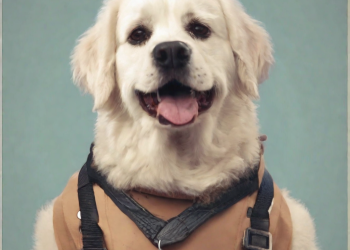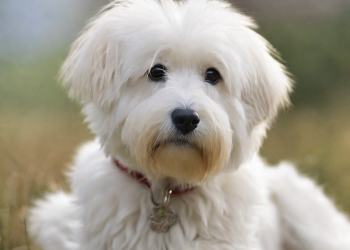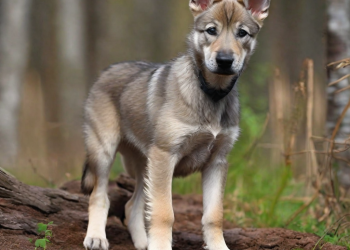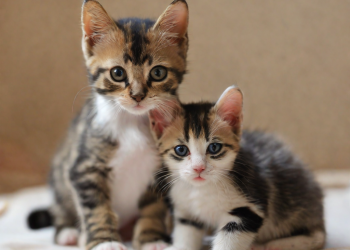Anatomy and function of the third eyelid in dogs
The third eyelid in dogs is an ocular structure that plays a crucial role in protecting and lubricating the eye.
Their health is essential to prevent eye diseases and ensure the well-being of our pets.
After having researched the subject, I can affirm that it is important to know more about the third eyelid in dogs to properly take care of their ocular health.
The third eyelid in dogs
The third eyelid in dogs is an interesting phenomenon that can affect your pet’s eye health. Keep reading to learn more about its causes, symptoms, and treatments.
Common diseases related to the third eyelid in dogs
The third eyelid in dogs is a crucial part of their ocular system, but unfortunately, it can be affected by several diseases. These are some of the most common diseases related to the third eyelid in dogs:
Third eyelid prolapse
Third eyelid prolapse in dogs occurs when the cartilage supporting the eyelid weakens, resulting in it shifting outward, partially or completely covering the eye. This can cause discomfort and affect the dog’s vision.
Inflammation of the third eyelid
Third eyelid inflammation, also known as “cherry eye,” is a condition in which the third eyelid gland becomes inflamed and bulges, creating a red bump in the corner of the dog’s eye.
Third eyelid tumors
Third eyelid tumors in dogs can be benign or malignant, and often require surgical intervention for removal. These tumors can affect the function of the third eyelid and cause discomfort to the dog.
Other eye conditions related to the third eyelid
In addition to the diseases mentioned, third eyelid in dogs can also be related to other eye conditions, such as keratoconjunctivitis sicca and uveitis, which can affect the dog’s overall eye health.
It is essential to watch for any signs of discomfort or abnormality in your dog’s third eyelid and seek immediate veterinary attention if any problems are observed.
Symptoms and diagnosis of third eyelid problems in dogs
The third eyelid in dogs is a crucial part of their ocular system, so it is important to watch for any signs of problems. Here are the symptoms and diagnostic methods used by veterinarians to detect third eyelid problems.
Clinical signs of third eyelid problems
- Presence of a lump or mass in the third eyelid area
- Red or swollen eye
- Eye tearing abnormally
- Change in the appearance of the eye, such as sinking or protrusion
Diagnostic methods used by veterinarians
- Physical examination of the eye and third eyelid
- Laboratory tests to evaluate the presence of infections or systemic diseases
- Imaging tests, such as ultrasounds or MRIs, to evaluate the structure of the third eyelid
Early detection of third eyelid problems is crucial for effective treatment, so it is important to keep an eye out for any changes in your dog’s eye health.
Treatments available for third eyelid problems in dogs
The third eyelid in dogs is a crucial part of their ocular system, so it is important to know the treatments available to address any problems that may arise. Below are some treatment options for third eyelid problems:
Treatment Options for Third Eyelid Prolapse
- Topical medications: In some cases of third eyelid prolapse, topical medications may be prescribed to reduce inflammation and promote eyelid retraction.
- Surgery: When third eyelid prolapse is severe or recurrent, surgery may be necessary to correct the problem and ensure that the eyelid remains in its proper position.
Treatments for inflammation and tumors of the third eyelid
- Drug therapy: In cases of inflammation of the third eyelid, anti-inflammatory medications may be prescribed to reduce swelling and relieve discomfort.
- Surgical removal: In the case of third eyelid tumors, surgical removal may be necessary to remove the abnormal growth and prevent further complications.
Surgical procedures to correct problems in the third eyelid
- Third eyelid repositioning: In certain cases, a surgical procedure may be performed to reposition the third eyelid and correct any structural abnormalities that are causing problems.
- Third eyelid reconstruction: In more complex situations, third eyelid reconstruction may be necessary to restore function and prevent future complications.
It is essential to consult a veterinarian who specializes in ophthalmology to determine the best treatment approach for any problem related to the third eyelid in dogs. Timely and proper care can make a difference in your pet’s long-term eye health.
Care and prevention of the third eyelid in dogs
The third eyelid in dogs is a crucial part of their ocular system, so it is important to take preventative measures to maintain its health. Here are some recommendations to care for and prevent third eyelid problems:
Preventive measures to maintain the health of the third eyelid
- Maintain good eye hygiene, gently cleaning around the eye and third eyelid to prevent dirt buildup.
- Avoid exposure to irritating factors such as smoke, dust or chemicals that can cause inflammation of the third eyelid.
- Provide a balanced diet and supplements that promote eye health, such as those rich in omega-3 fatty acids.
- Schedule regular eye checkups with a veterinarian to detect any third eyelid problems in their early stages.
Postoperative care after surgeries related to the third eyelid
- Follow your veterinarian’s instructions for wound care and medication administration after third eyelid surgery.
- Prevent the dog from rubbing or scratching the operated area to prevent complications.
- Monitor for any signs of infection or discomfort and contact your veterinarian if problems occur.
Importance of regular ophthalmological check-ups to detect problems in the third eyelid
Eye exams are essential to detect third eyelid problems in their early stages, which can lead to more effective treatment and better outcomes for your dog’s eye health.
By following these recommendations, dog owners can significantly contribute to the prevention and care of their pet’s third eyelid, ensuring their long-term ocular well-being.
Experiences and testimonies of dog owners with third eyelid problems
The third eyelid in dogs is a crucial part of their ocular anatomy, and problems related to it can be concerning for pet owners. Below are some experiences and testimonials from owners whose dogs have faced third eyelid problems.
Stories from owners with dogs diagnosed with third eyelid prolapse
– María, whose dog was diagnosed with third eyelid prolapse, shared her experience of noticing the protuberance in her pet’s eye and the concern it caused her.
– Juan, whose dog experienced recurrent third eyelid prolapse, spoke about the challenges of managing this condition long-term.
Experiences of owners with dogs treated for inflammation or tumors of the third eyelid
– Laura recounted how her dog experienced inflammation of the third eyelid and the symptoms she observed before seeking veterinary treatment.
– Carlos shared the story of his dog who was diagnosed with a tumor on the third eyelid, and how the treatment affected your pet’s quality of life.
Advice and recommendations from owners who have gone through situations related to the third eyelid
– Ana advised other dog owners to be aware of any changes in their pets’ eyes and to seek immediate veterinary attention if they notice anything unusual.
– Pablo recommended seeking second opinions and alternative treatment options if the first approach does not provide satisfactory results.
These experiences and testimonials highlight the importance of being informed about the third eyelid in dogs and the need for support and guidance for those facing issues related to their pet’s eye health.
Importance of education and awareness about the third eyelid in dogs
The third eyelid in dogs is a crucial part of their ocular system, and it is essential that owners are educated and aware of its importance to the health of their pets. Third eyelid education in dogs covers several aspects, including the structure and function of the third eyelid, as well as common diseases related to it.
Role of veterinarians in dog eye health education
Veterinarians play a critical role in educating dog owners about the third eyelid. They should provide detailed information about the anatomy and function of the third eyelid, as well as advice on how to keep your eye health in optimal condition.
Awareness campaigns about the importance of the third eyelid in dogs
It is crucial that third eyelid awareness campaigns are carried out in dogs to inform owners about the importance of their eye health. These campaigns may include educational materials, seminars, and community events to spread information about the topic.
Resources available for dog owners who want to learn more about the third eyelid
There are numerous resources available for dog owners who want to learn more about the third eyelid and its impact on their pet’s eye health. This includes online educational materials, informational brochures at veterinary clinics, and the ability to consult directly with professionals in the field of veterinary ophthalmology.
In summary, education and awareness about the third eyelid in dogs are essential to ensure the ocular health of pets. Veterinarians, awareness campaigns, and available resources play a crucial role in this process, and it is the responsibility of dog owners to take advantage of this information for the well-being of their pets.
Advances in the research and treatment of third eyelid problems in dogs
Recent studies on diseases related to the third eyelid in dogs
Research on the third eyelid in dogs has advanced significantly in recent years, which has allowed a better understanding of diseases related to this ocular structure. Recent studies have shed light on the prevalence and risk factors for third eyelid problems, as well as new ways to address these conditions.
New surgical techniques to correct problems in the third eyelid
Advances in ophthalmic surgery have led to the development of new techniques to correct problems with the third eyelid in dogs. These techniques, which include less invasive procedures and shorter recovery times, offer more effective and safer treatment options for third eyelid conditions.
Future perspectives in the treatment of third eyelid conditions in dogs
The future in the treatment of problems in the third eyelid in dogs looks promising, with ongoing research seeking to develop more specific and personalized therapies. These advances are expected to lead to a significant improvement in the quality of life of dogs affected by third eyelid diseases.
Tips to maintain dog eye health
Dog eye health, including the third eyelid, is crucial to their overall well-being. Here are some tips to maintain your dog’s eye health:
Recommended eye hygiene habits
- Regular cleaning of the area around the third eyelid to prevent the accumulation of dirt and secretions.
- Use of ophthalmic solutions recommended by the veterinarian to maintain ocular hygiene.
Food and supplements
- Balanced diet rich in antioxidants, such as vitamins A, C and E, which promote eye health.
- Specific supplements for eye health, such as omega-3, may be beneficial in preventing third eyelid problems.
Activities and exercises
- Promote regular exercise to maintain adequate blood circulation in the eyes, including walks and outdoor games.
- Avoid prolonged exposure to screens and bright lights that can cause eye fatigue in dogs.
These tips can help prevent problems with your dog’s third eyelid and keep his eye health in optimal condition. Remember that early detection of any abnormality in the third eyelid is essential for effective treatment.
Conclusions and final recommendations
In conclusion, the third eyelid in dogs plays a crucial role in eye protection and overall health of pets. It is important to watch for any signs of problems in this area and seek veterinary care immediately if necessary.
Recommendations for dog owners
- Maintain good eye hygiene to prevent problems in the dog’s third eyelid.
- Perform regular eye checkups to detect problems in early stages.
- Seek immediate veterinary attention if any signs of inflammation, prolapse or tumors are observed in the dog’s third eyelid.
Future perspectives in research and treatment
Research is expected to continue advancing the field of dog eye health, which could lead to new advances in the treatment of conditions related to the third eyelid< /span>. Dog owners should be aware of these developments and seek the best possible care for their pets.








